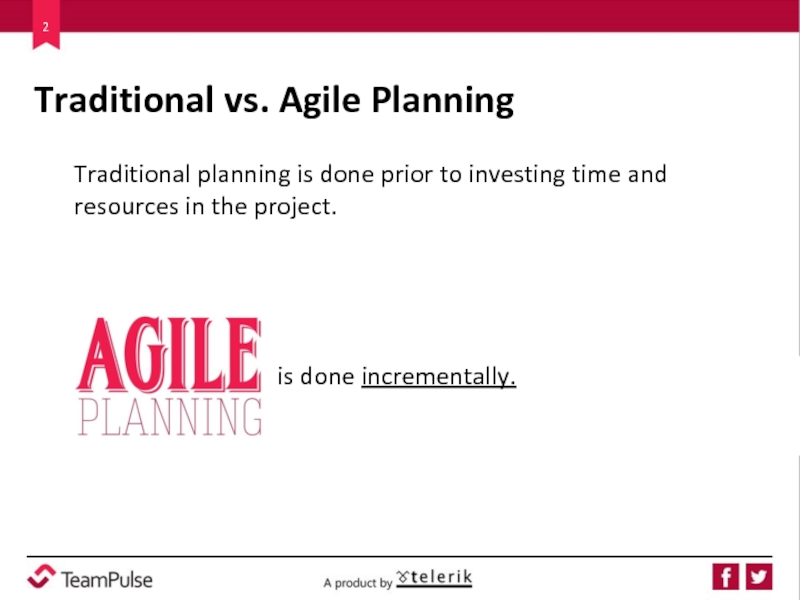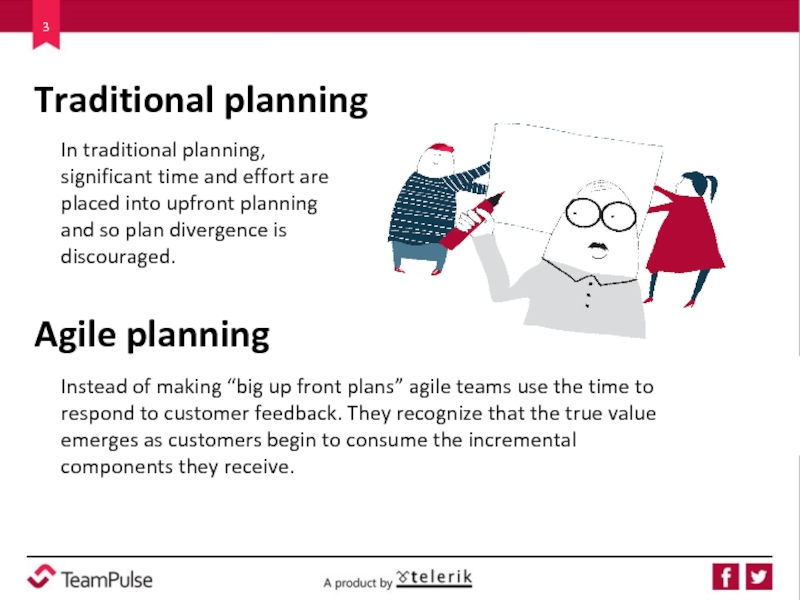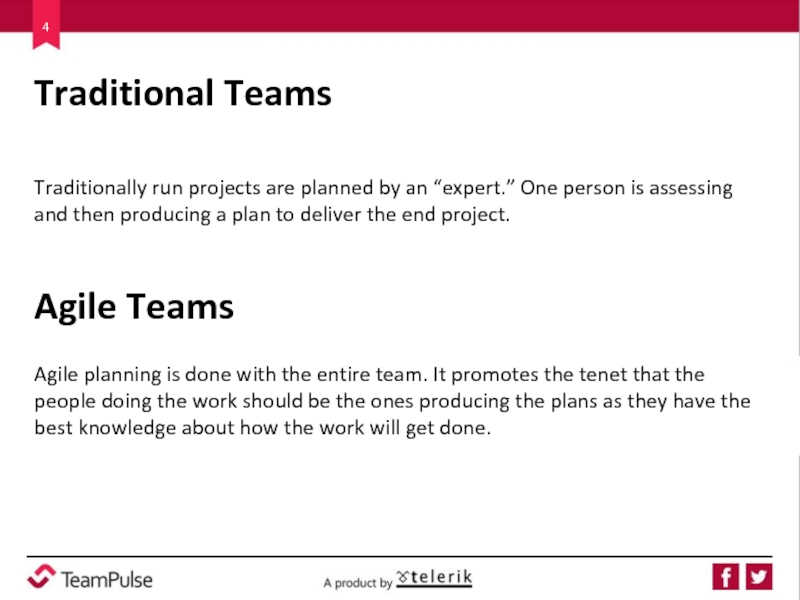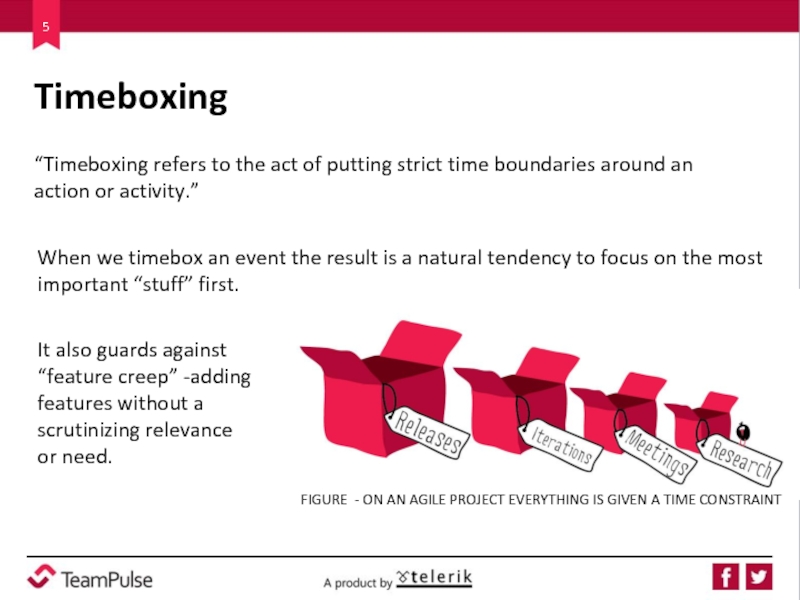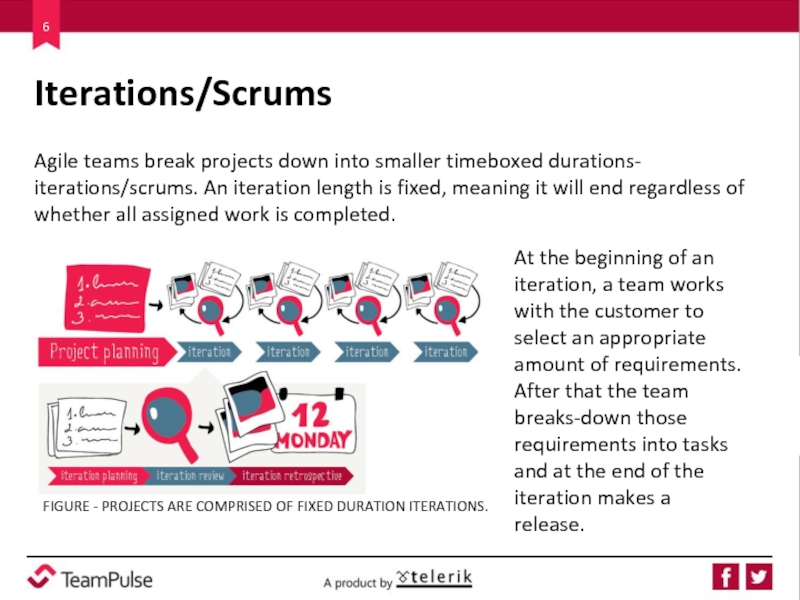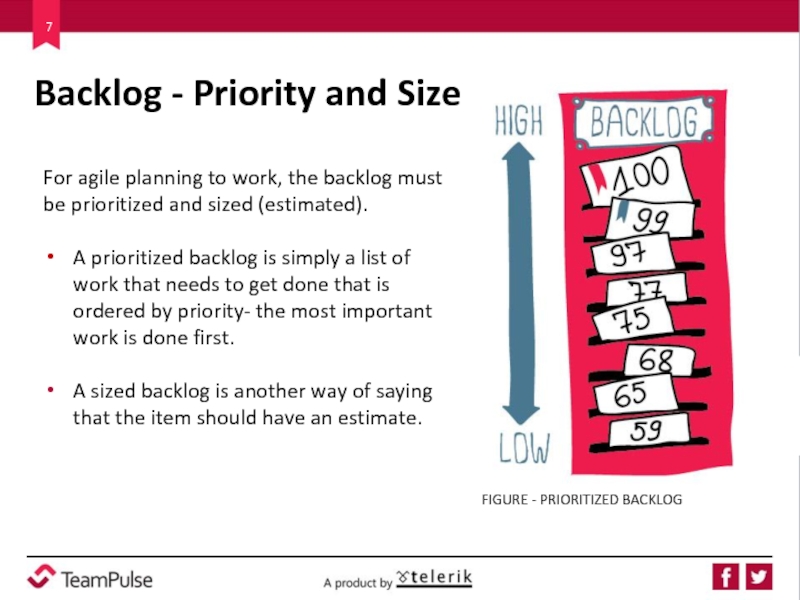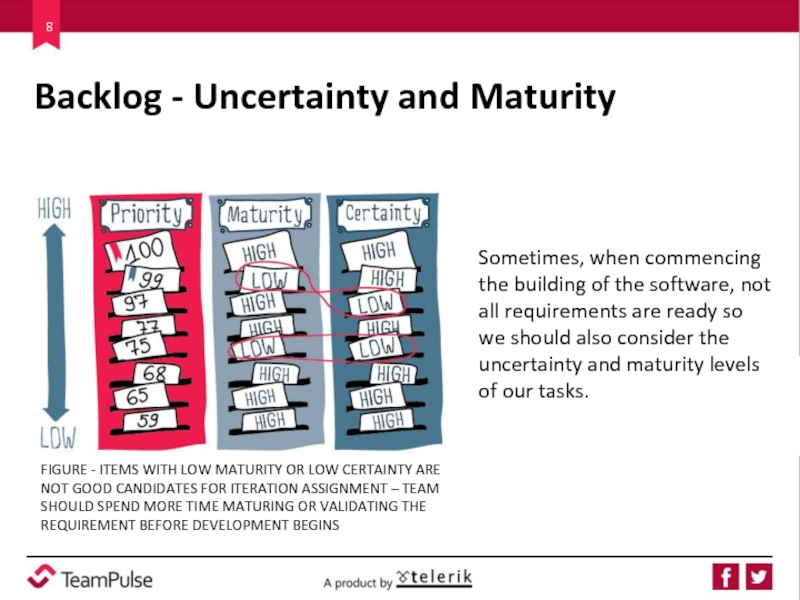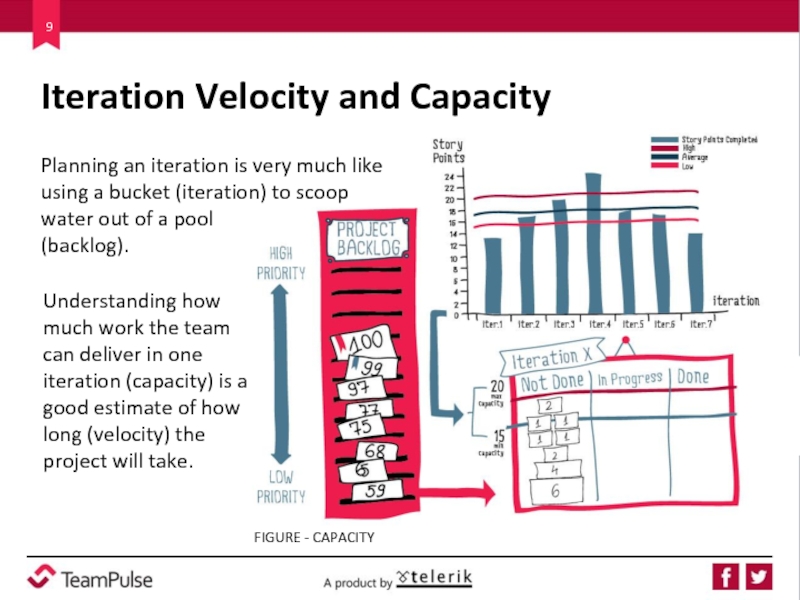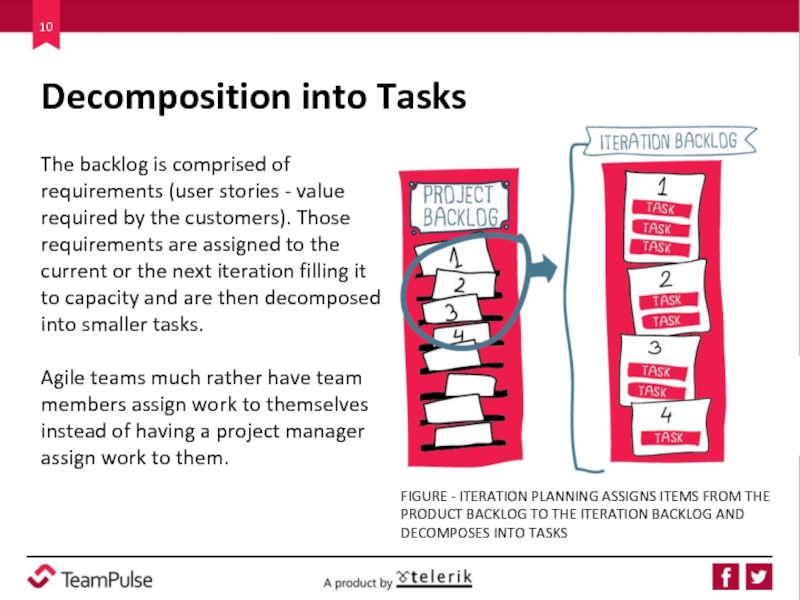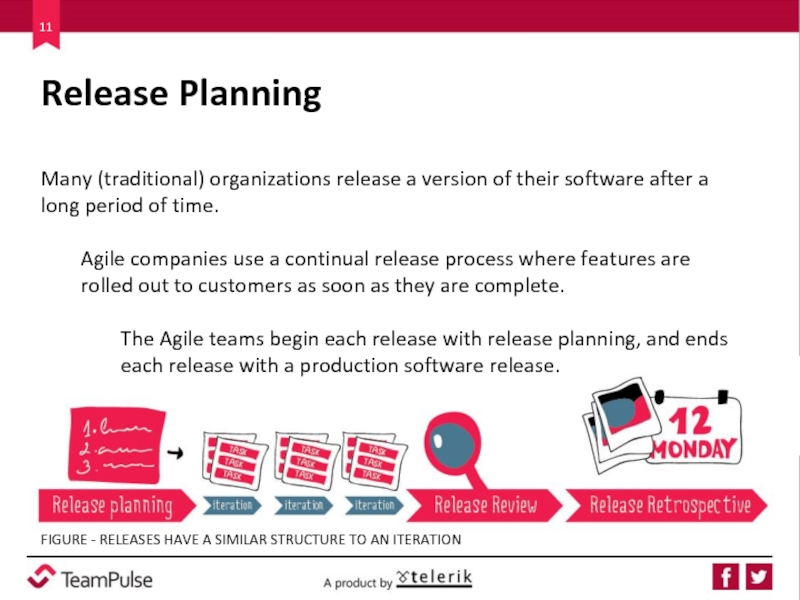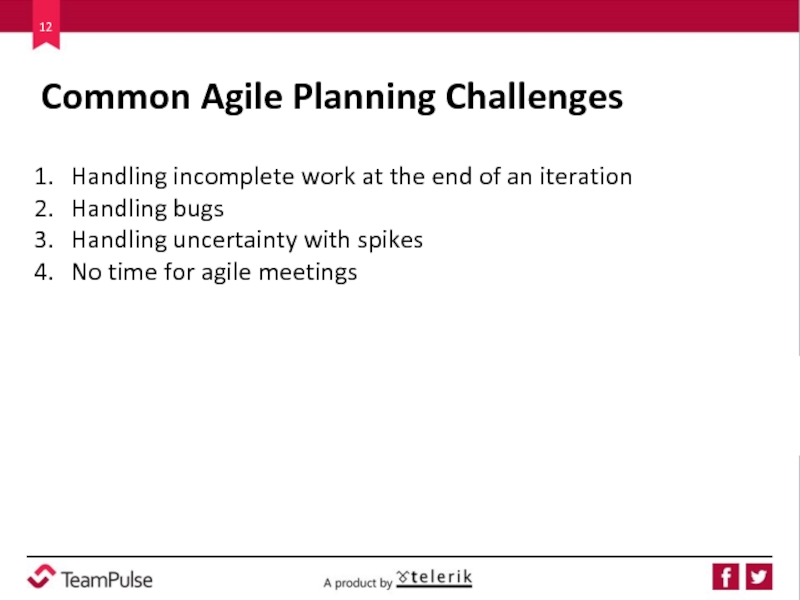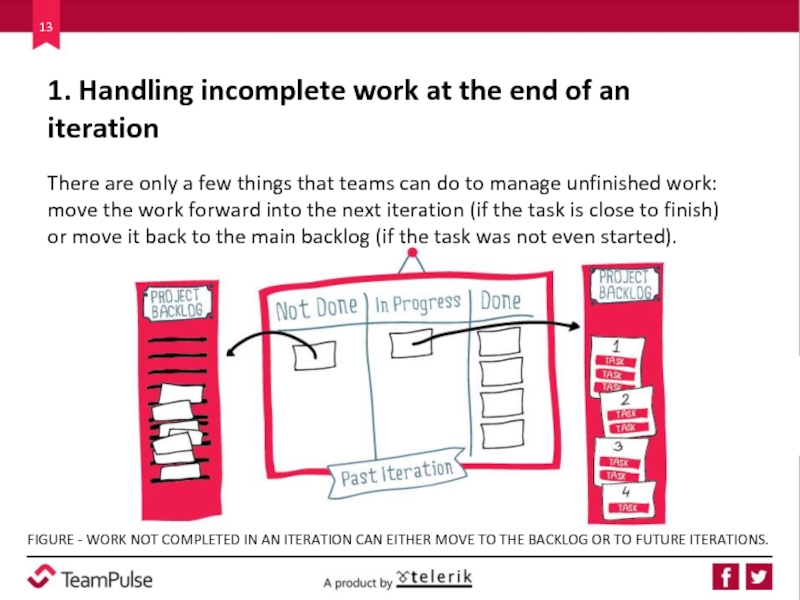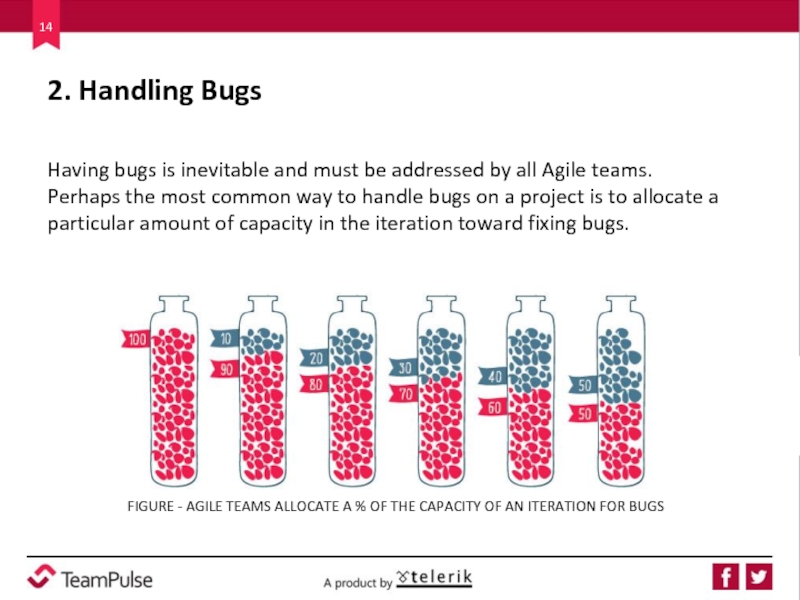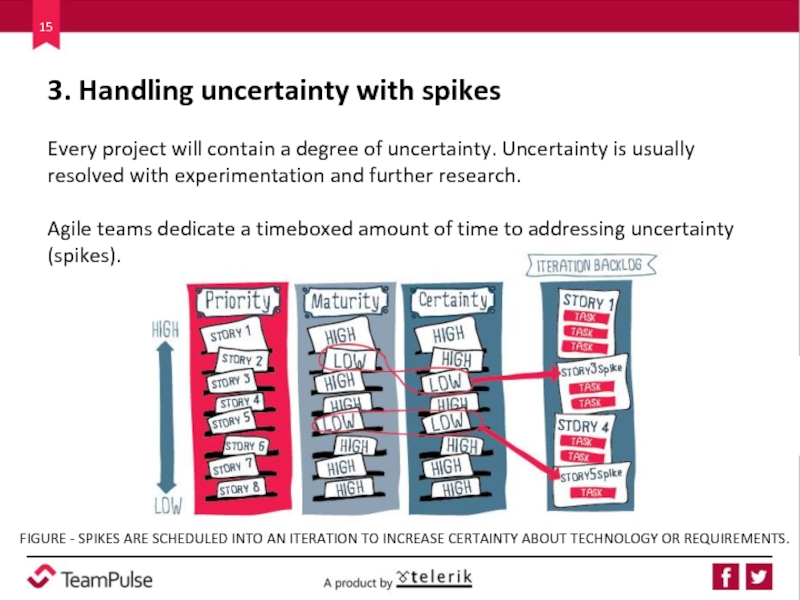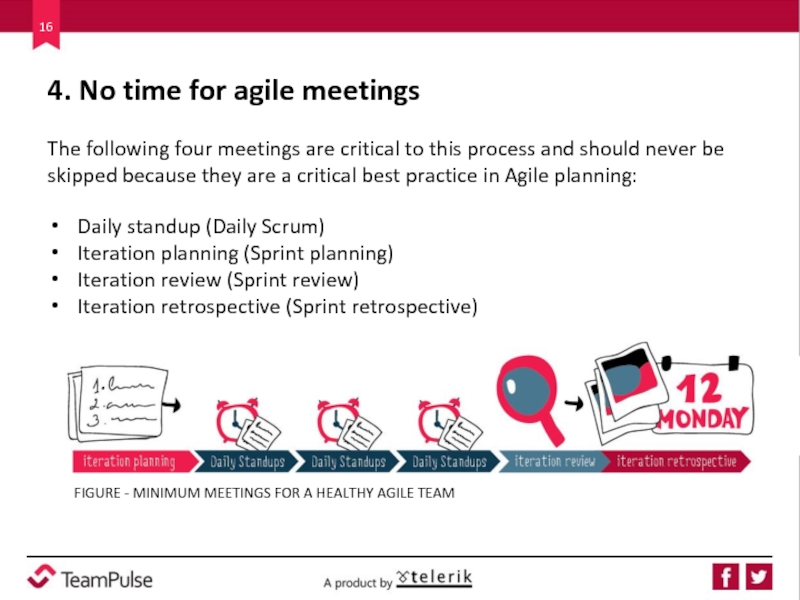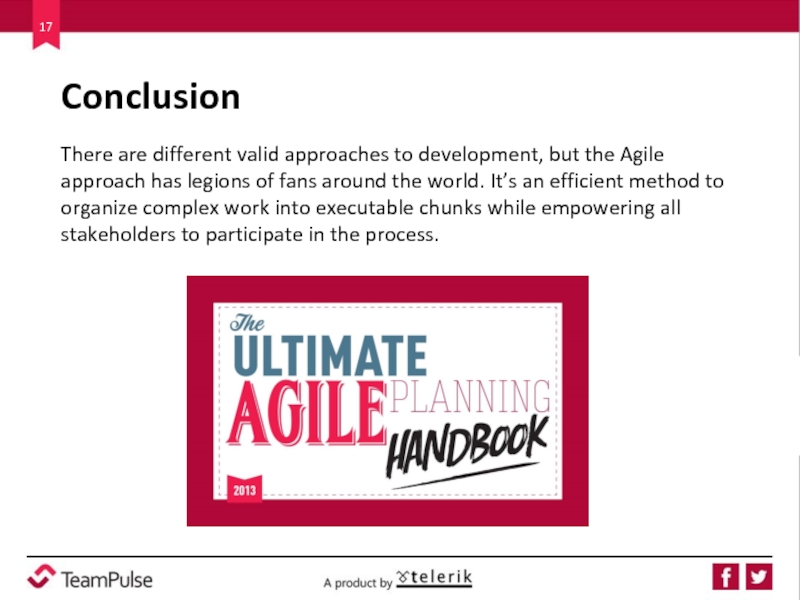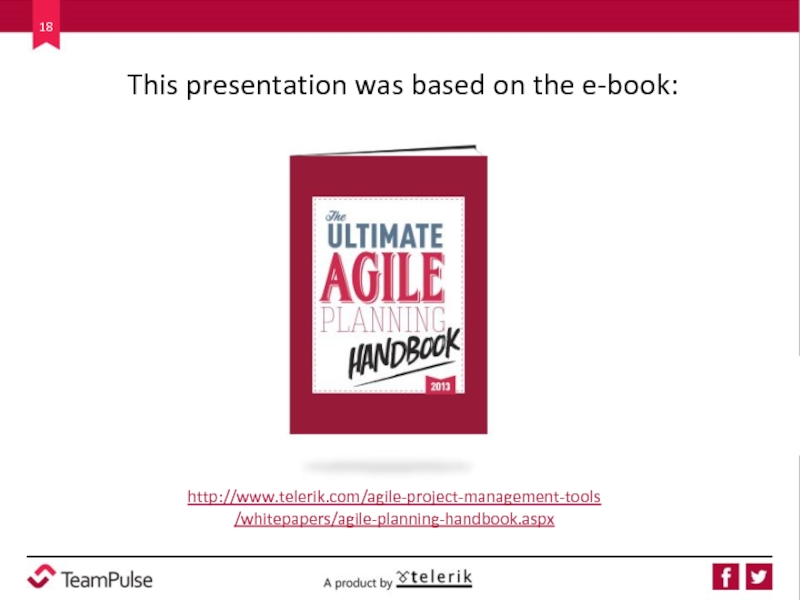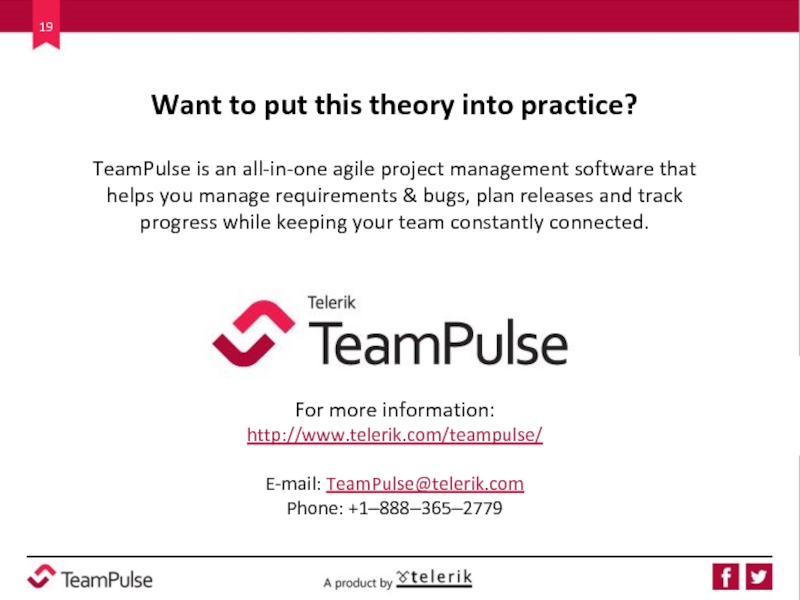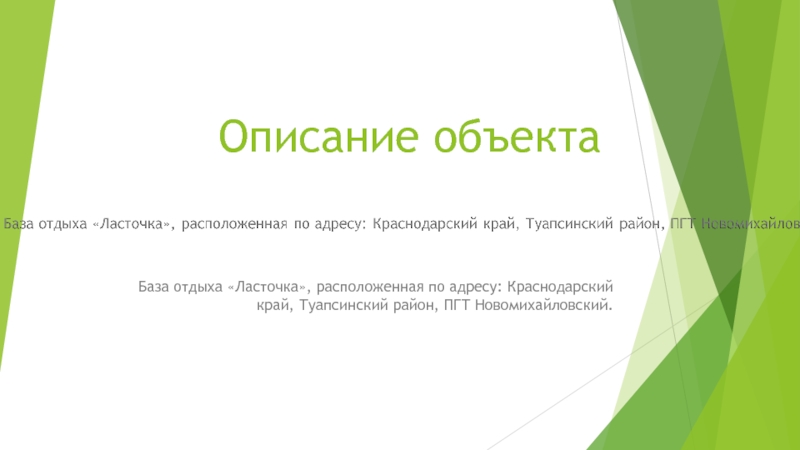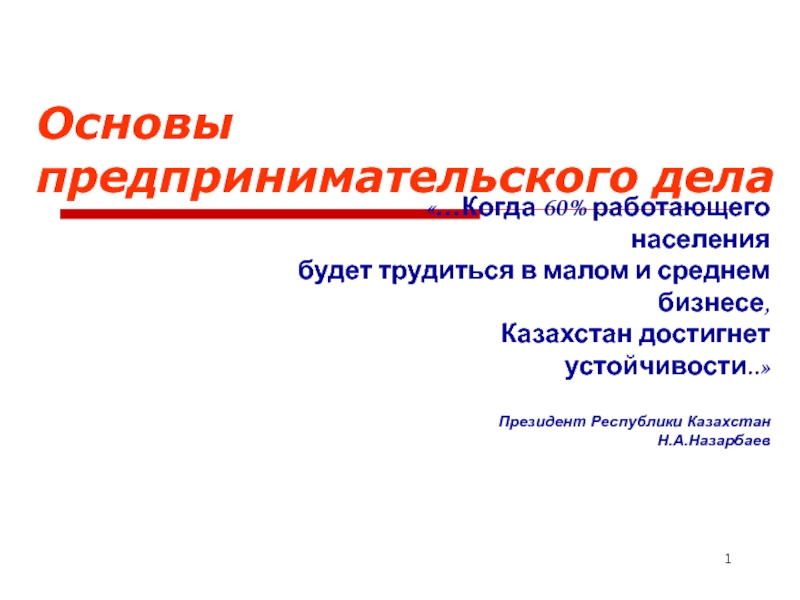- Главная
- Разное
- Дизайн
- Бизнес и предпринимательство
- Аналитика
- Образование
- Развлечения
- Красота и здоровье
- Финансы
- Государство
- Путешествия
- Спорт
- Недвижимость
- Армия
- Графика
- Культурология
- Еда и кулинария
- Лингвистика
- Английский язык
- Астрономия
- Алгебра
- Биология
- География
- Детские презентации
- Информатика
- История
- Литература
- Маркетинг
- Математика
- Медицина
- Менеджмент
- Музыка
- МХК
- Немецкий язык
- ОБЖ
- Обществознание
- Окружающий мир
- Педагогика
- Русский язык
- Технология
- Физика
- Философия
- Химия
- Шаблоны, картинки для презентаций
- Экология
- Экономика
- Юриспруденция
The Ultimate Agile Planning Handbook презентация
Содержание
- 2. Traditional vs. Agile Planning
- 3. Traditional planning In traditional planning, significant
- 4. Traditional Teams Traditionally run projects are planned
- 5. Timeboxing in Agile “Timeboxing refers to the
- 6. Iterations/Scrums Agile teams break projects down into
- 7. Backlog - Priority and Size
- 8. Backlog - Uncertainty and Maturity
- 9. Iteration Velocity and Capacity
- 10. Decomposition into Tasks The backlog
- 11. Release Planning Many
- 12. Common Agile Planning Challenges Handling
- 13. 1. Handling incomplete work at
- 14. 2. Handling Bugs Having
- 15. 3. Handling uncertainty with spikes
- 16. 4. No time for agile
- 17. Conclusion There are different
- 18. http://www.telerik.com/agile-project-management-tools/whitepapers/agile-planning-handbook.aspx This presentation was based on the e-book:
- 19. TeamPulse is an all-in-one agile
Слайд 2Traditional vs. Agile Planning
Traditional planning is done prior to investing time and resources in the project.
Слайд 3Traditional planning
In traditional planning, significant time and effort are placed into
Agile planning
Instead of making “big up front plans” agile teams use the time to respond to customer feedback. They recognize that the true value emerges as customers begin to consume the incremental components they receive.
Слайд 4Traditional Teams
Traditionally run projects are planned by an “expert.” One person
Agile Teams
Agile planning is done with the entire team. It promotes the tenet that the people doing the work should be the ones producing the plans as they have the best knowledge about how the work will get done.
Слайд 5Timeboxing in Agile
“Timeboxing refers to the act of putting strict time
When we timebox an event the result is a natural tendency to focus on the most important “stuff” first.
It also guards against “feature creep” -adding features without a scrutinizing relevance or need.
FIGURE - ON AN AGILE PROJECT EVERYTHING IS GIVEN A TIME CONSTRAINT
Слайд 6Iterations/Scrums
Agile teams break projects down into smaller timeboxed durations- iterations/scrums. An
At the beginning of an iteration, a team works with the customer to select an appropriate amount of requirements. After that the team breaks-down those requirements into tasks and at the end of the iteration makes a release.
FIGURE - PROJECTS ARE COMPRISED OF FIXED DURATION ITERATIONS.
Слайд 7
Backlog - Priority and Size
For agile planning to work, the backlog
A prioritized backlog is simply a list of work that needs to get done that is ordered by priority- the most important work is done first.
A sized backlog is another way of saying that the item should have an estimate.
FIGURE - PRIORITIZED BACKLOG
Слайд 8
Backlog - Uncertainty and Maturity
Sometimes, when commencing the building of the
FIGURE - ITEMS WITH LOW MATURITY OR LOW CERTAINTY ARE NOT GOOD CANDIDATES FOR ITERATION ASSIGNMENT – TEAM SHOULD SPEND MORE TIME MATURING OR VALIDATING THE REQUIREMENT BEFORE DEVELOPMENT BEGINS
Слайд 9
Iteration Velocity and Capacity
Understanding how much work the team can deliver
Planning an iteration is very much like using a bucket (iteration) to scoop water out of a pool
(backlog).
FIGURE - CAPACITY
Слайд 10
Decomposition into Tasks
The backlog is comprised of requirements (user stories -
Agile teams much rather have team members assign work to themselves instead of having a project manager assign work to them.
FIGURE - ITERATION PLANNING ASSIGNS ITEMS FROM THE PRODUCT BACKLOG TO THE ITERATION BACKLOG AND DECOMPOSES INTO TASKS
Слайд 11
Release Planning
Many (traditional) organizations release a version of their software after
Agile companies use a continual release process where features are rolled out to customers as soon as they are complete.
The Agile teams begin each release with release planning, and ends each release with a production software release.
FIGURE - RELEASES HAVE A SIMILAR STRUCTURE TO AN ITERATION
Слайд 12
Common Agile Planning Challenges
Handling incomplete work at the end of an
Handling bugs
Handling uncertainty with spikes
No time for agile meetings
Слайд 13
1. Handling incomplete work at the end of an iteration
There are
move the work forward into the next iteration (if the task is close to finish) or move it back to the main backlog (if the task was not even started).
FIGURE - WORK NOT COMPLETED IN AN ITERATION CAN EITHER MOVE TO THE BACKLOG OR TO FUTURE ITERATIONS.
Слайд 14
2. Handling Bugs
Having bugs is inevitable and must be addressed by
Perhaps the most common way to handle bugs on a project is to allocate a particular amount of capacity in the iteration toward fixing bugs.
FIGURE - AGILE TEAMS ALLOCATE A % OF THE CAPACITY OF AN ITERATION FOR BUGS
Слайд 15
3. Handling uncertainty with spikes
Every project will contain a degree of
Agile teams dedicate a timeboxed amount of time to addressing uncertainty (spikes).
FIGURE - SPIKES ARE SCHEDULED INTO AN ITERATION TO INCREASE CERTAINTY ABOUT TECHNOLOGY OR REQUIREMENTS.
Слайд 16
4. No time for agile meetings
The following four meetings are critical
Daily standup (Daily Scrum)
Iteration planning (Sprint planning)
Iteration review (Sprint review)
Iteration retrospective (Sprint retrospective)
FIGURE - MINIMUM MEETINGS FOR A HEALTHY AGILE TEAM
Слайд 17
Conclusion
There are different valid approaches to development, but the Agile approach
Слайд 18
http://www.telerik.com/agile-project-management-tools/whitepapers/agile-planning-handbook.aspx
This presentation was based on the e-book:
Слайд 19
TeamPulse is an all-in-one agile project management software that helps you manage
Want to put this theory into practice?
For more information:
http://www.telerik.com/teampulse/
E-mail: TeamPulse@telerik.com
Phone: +1‒888‒365‒2779

